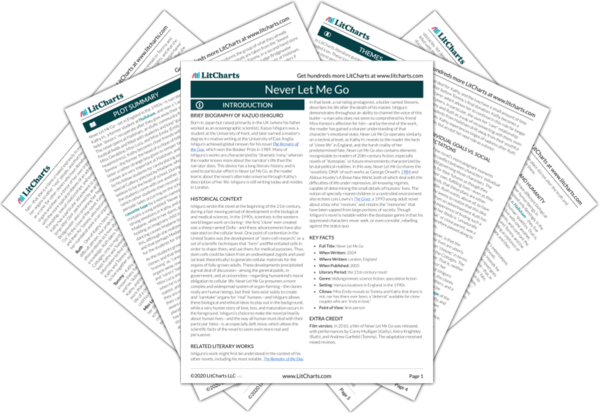LitCharts assigns a color and icon to each theme in Never Let Me Go, which you can use to track the themes throughout the work.
Maturation and “Growing Up”
Individual Goals vs. Social Expectations
Life, Death, and Humanity
Loving, Caring, and Donation
